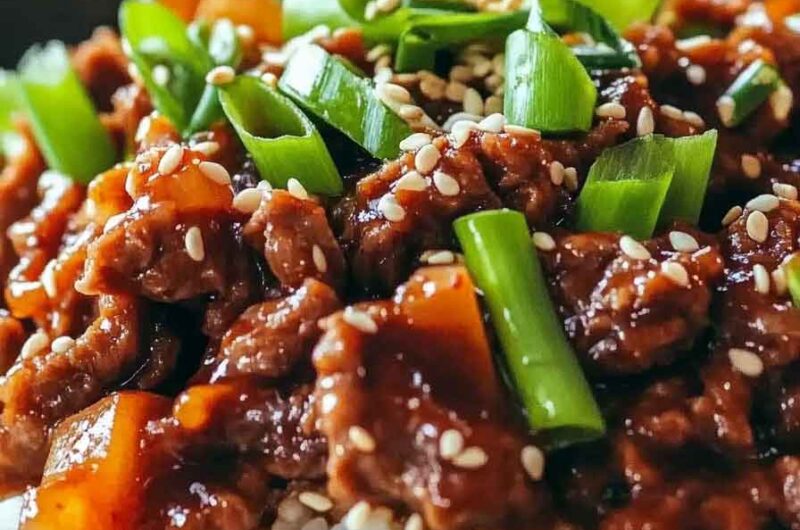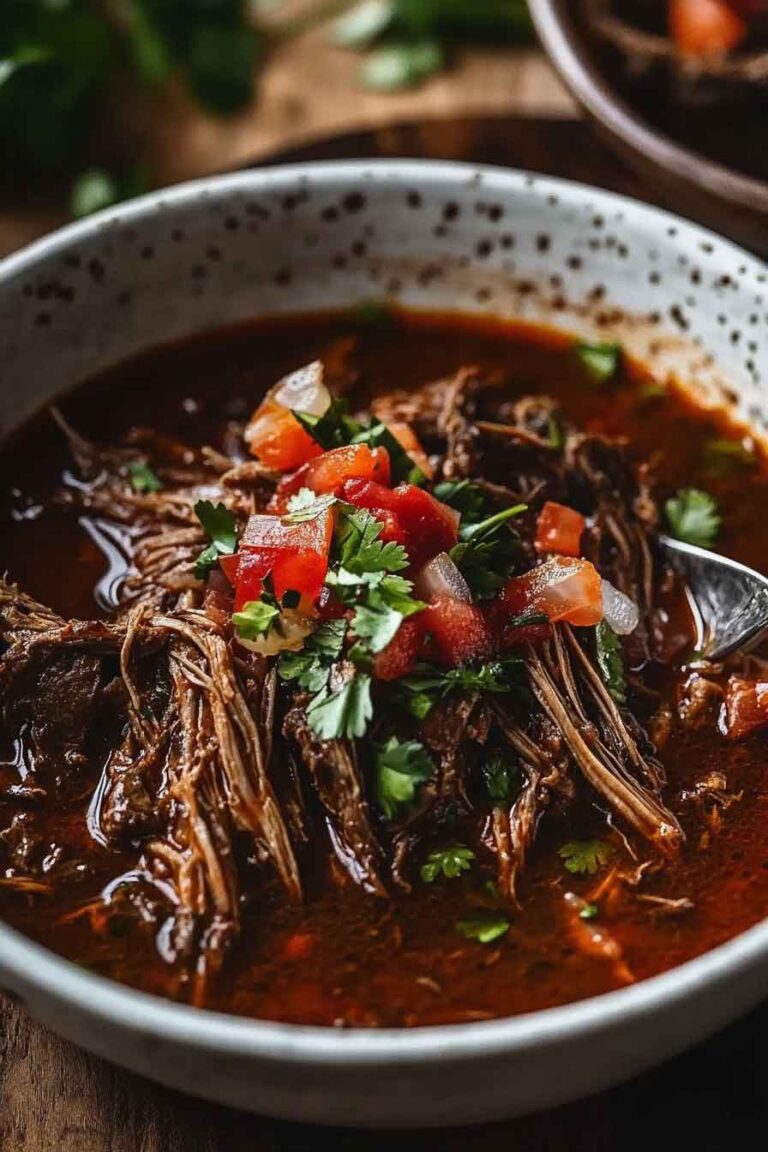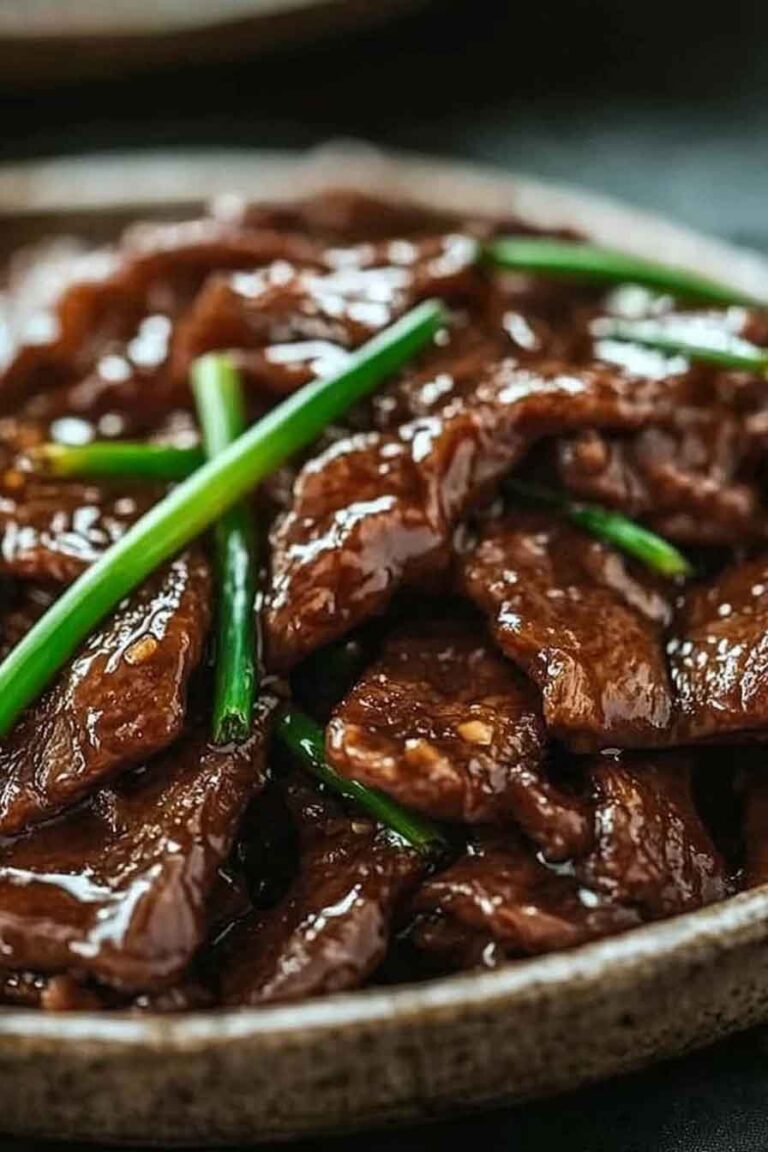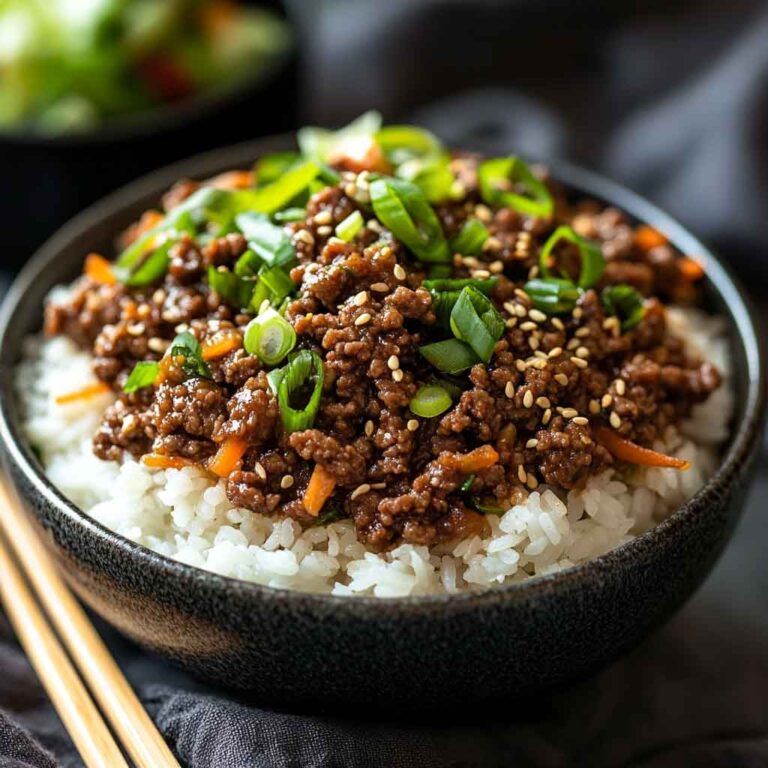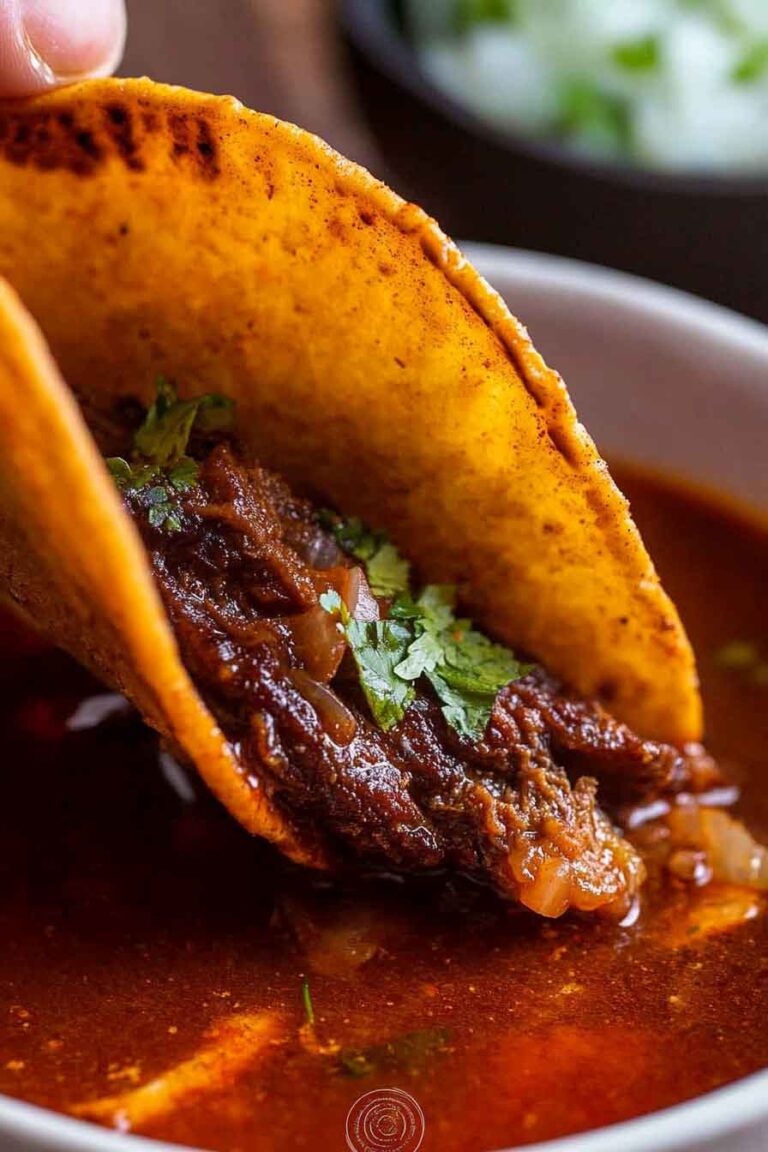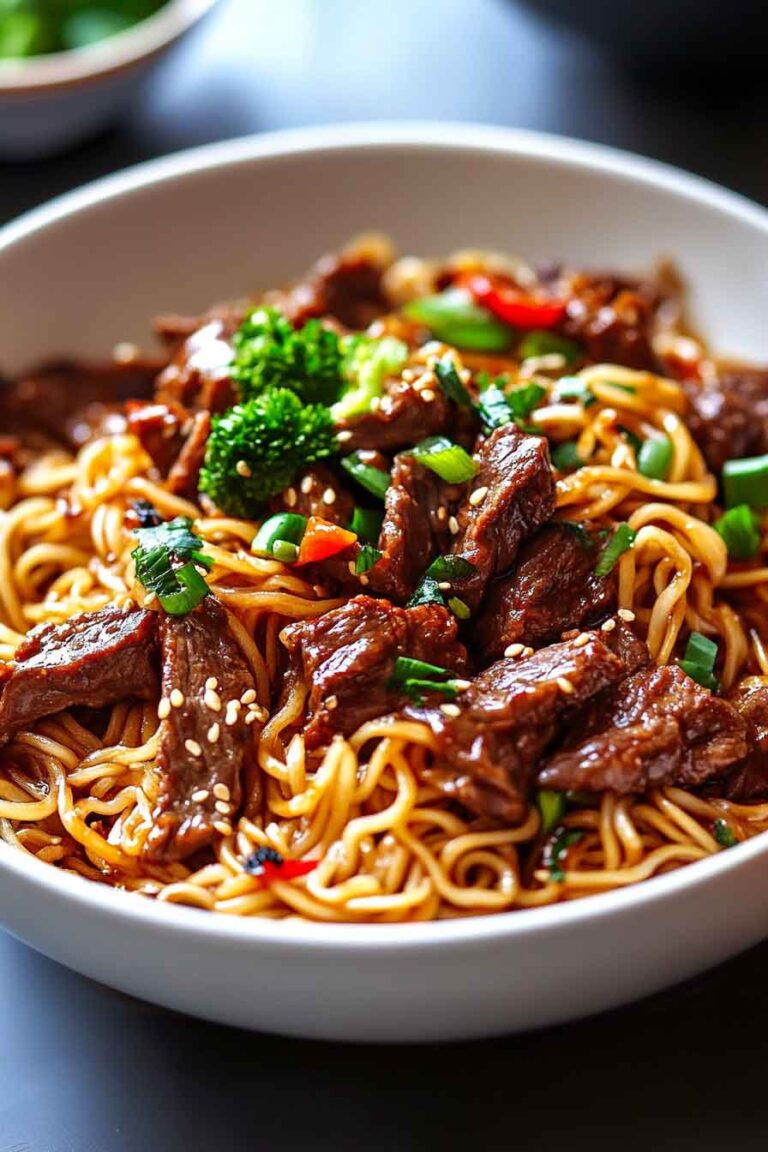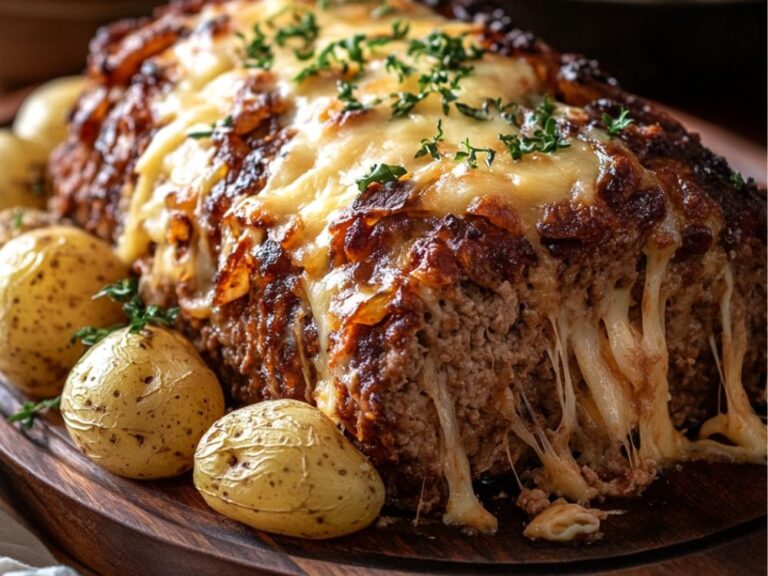Authentic Korean Beef Bowl Recipe
Wanna try something easy and full of flavor? This Korean beef bowl is one of my go-to meals. It’s sweet, savory, and totally satisfying.
The beef is cooked with garlic, soy sauce, and a little brown sugar. It’s fast, it’s tasty, and it goes perfectly over hot rice. My whole family loves it—even the picky eaters!
No special tools, no fancy stuff. Just simple, bold flavors in one easy bowl. It’s like comfort food with a twist.
Let’s make it together! I’ll show you how I cook it at home. You’re gonna love how fast and yummy it is.
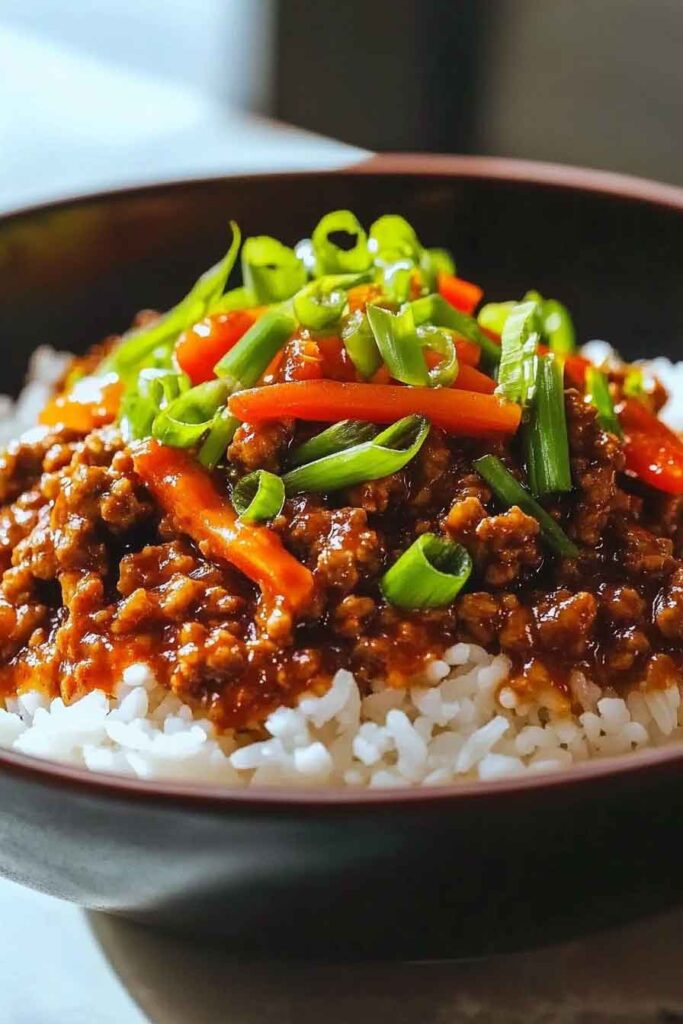
Why You’ll Love This Recipe
- Flavor-Packed & Balanced: A perfect mix of salty, sweet, spicy, and nutty flavors.
- Fast & Convenient: Ready in under 30 minutes with simple pantry ingredients.
- Customizable: Easy to adjust spice levels or add veggies.
- Meal-Prep Friendly: Stays delicious even after reheating.
- Kid-Approved: Mild enough for young taste buds, but satisfying for adults.
What You Need to Know Before You Start
Prep Time & Cook Time:
Prep Time: 10 minutes
Cook Time: 15 minutes
Total Time: 25 minutes
Servings:
This recipe yields 4 bowls. You can double or halve depending on your needs.
Difficulty:
Beginner-friendly. No fancy tools or hard techniques—just mix, cook, and serve.
Required Kitchen Tools
- Non-stick skillet or wok
- Mixing bowl
- Wooden spoon or spatula
- Garlic press or grater (for fresh garlic and ginger)
- Rice cooker or pot (for cooking rice)
- Measuring spoons and cups
Ingredients for Korean Beef Bowl
Here’s everything you need to make this flavorful beef bowl (exact measurements in the recipe card below):
- Ground Beef (Minced Beef): Use lean or regular beef; both work well.
- Garlic Puree or Fresh Garlic: Essential for authentic flavor.
- Ginger Puree or Fresh Ginger: Adds warmth and depth.
- Soy Sauce: Brings saltiness and umami.
- Honey or Brown Sugar: A touch of sweetness to balance the soy.
- Sesame Oil: For rich, nutty aroma.
- Chili Flakes or Powder: Optional heat—adjust to taste.
- Cornflour (Cornstarch): Thickens the sauce slightly.
- Water: Helps combine the sauce.
- Carrots (Shredded or Julienned): Adds crunch and sweetness.
- Spring Onions (Scallions): Fresh and slightly sharp—great for topping.
- Cooking Oil: Neutral oil like vegetable or canola.
- Sesame Seeds: Toasted and sprinkled on top for texture.
- Steamed Rice: White or brown rice works as a base.
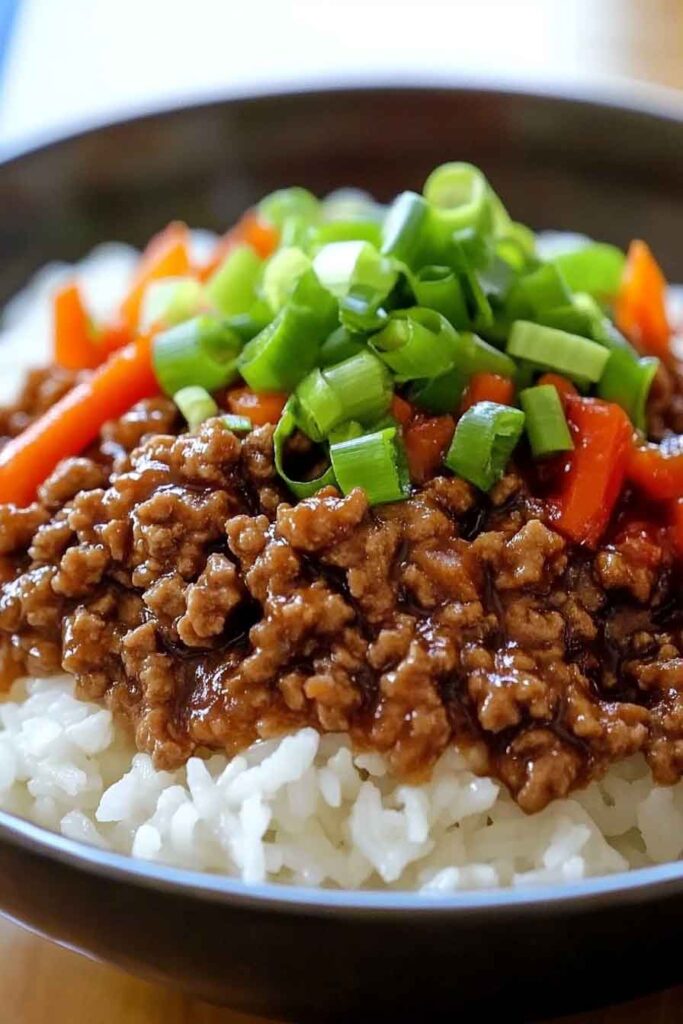
Variations for Korean Beef Bowls
- Make It Spicier: Add gochujang (Korean chili paste) or a drizzle of sriracha for deeper heat.
- Use Ground Turkey or Chicken: For a leaner option, swap beef with turkey or chicken. You may need to adjust seasoning.
- Add Veggies: Toss in baby spinach, zucchini, mushrooms, or bell peppers for extra nutrients and texture.
- Serve with Noodles: Instead of rice, try soba or udon noodles for a fun twist.
- Top with a Fried Egg: A soft egg yolk adds richness and makes the bowl even more satisfying.
- Low-Carb Version: Serve over cauliflower rice or lettuce wraps.
How to Make Korean Beef Bowl: Step-by-Step Instructions
1. Make the Sauce
In a small bowl, combine soy sauce, sesame oil, honey (or brown sugar), cornflour, water, garlic, ginger, and chili flakes. Stir well until everything is dissolved and blended. Set aside.
2. Cook the Beef
Heat cooking oil in a large non-stick skillet over medium-high heat.
Add the ground beef and cook, breaking it apart with a wooden spoon, until fully browned—about 5–7 minutes. Drain any excess fat if needed.
3. Add the Sauce
Pour the prepared sauce over the browned beef. Stir to coat all the meat evenly.
Let it simmer for 3–5 minutes until the sauce slightly thickens and clings to the meat.
4. Add Veggies (Optional)
If using shredded carrots or other veggies, add them now and sauté for another 2–3 minutes. They should soften slightly but still have some bite.
5. Finish and Garnish
Remove from heat. Stir in chopped spring onions and sprinkle with sesame seeds.
Taste and adjust salt or chili, if needed.
How to Serve Korean Beef Bowls
These bowls are all about comfort and convenience. Here’s how to bring them to the table:
- Over Steamed Rice: The classic option. Spoon the beef mixture over freshly cooked white or brown rice.
- With Pickled Veggies: Add quick-pickled cucumber, radish, or kimchi for a tangy crunch.
- In a Lettuce Wrap: Use butter lettuce or romaine leaves for a lighter version.
- With a Fried or Soft-Boiled Egg: The runny yolk adds richness and blends perfectly with the beef and rice.
- Garnish Ideas: Sliced green onions, toasted sesame seeds, nori strips, shredded carrots, or even a drizzle of spicy mayo.
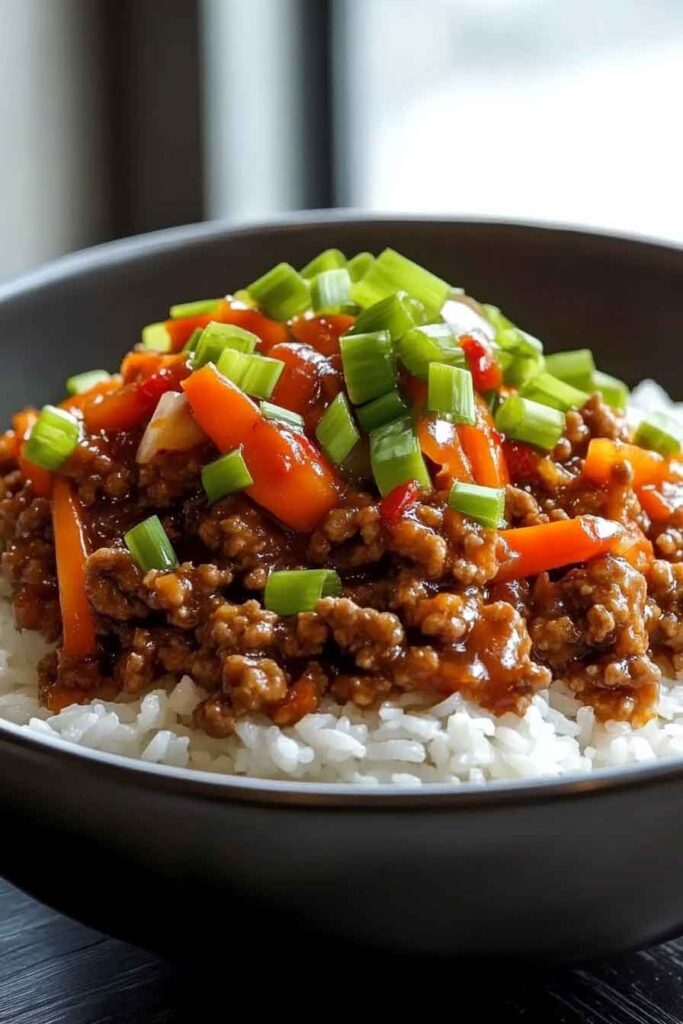
Storing Korean Beef Bowls
Refrigerator:
Store leftover beef in an airtight container in the fridge for up to 4 days. Rice should be stored separately for best texture.
Freezer:
You can freeze the cooked beef (without rice or fresh veggies) for up to 2 months. Thaw in the refrigerator overnight before reheating.
Reheating:
Gently reheat on the stovetop over medium heat or in the microwave. Add a splash of water if the sauce seems too thick after chilling.
Tips and Tricks for Success
- Use Fresh Garlic and Ginger: Fresh ingredients add a sharper, more vibrant flavor than pastes or powders.
- Don’t Overcrowd the Pan: Cook the beef in a large enough skillet to allow even browning and proper caramelization.
- Control the Heat: Adjust the chili flakes or add gochujang depending on your spice preference.
- Taste and Adjust: Before serving, taste and tweak soy, sugar, or chili to suit your flavor balance.
- Double the Sauce: Like extra saucy rice bowls? Consider doubling the sauce portion—especially if adding veggies or noodles.
Nutrition
Here’s a general nutritional estimate per serving (1 bowl with rice):
| Nutrient | Amount |
|---|---|
| Calories | ~420 kcal |
| Protein | 23g |
| Carbohydrates | 38g |
| Sugars | 10g |
| Fat | 20g |
| Saturated Fat | 6g |
| Fiber | 2g |
| Sodium | ~680mg |
Note: Values vary based on specific brands and portion sizes used.
Authentic Korean Beef Bowl Recipe
Course: Beef4
servings10
minutes15
minutes~420
kcalIngredients
1 lb (450g) ground beef
2 teaspoons garlic puree (or 3 cloves garlic, minced)
1 teaspoon ginger puree (or 1 inch fresh ginger, grated)
1/4 cup low-sodium soy sauce
1 tablespoon honey or brown sugar
1 tablespoon sesame oil
1 teaspoon chili flakes (adjust to taste)
1 teaspoon cornflour (cornstarch)
1/4 cup water
1/2 cup shredded carrots (optional)
2 spring onions, chopped
1 tablespoon sesame seeds
1 tablespoon cooking oil
Steamed white rice, for serving
Directions
- Mix the Sauce: In a small bowl, whisk soy sauce, sesame oil, honey, garlic, ginger, cornflour, water, and chili flakes. Set aside.
- Cook the Beef: In a large skillet, heat cooking oil over medium-high heat. Add ground beef and cook until browned, breaking it apart—about 5–7 minutes.
- Add the Sauce: Pour in the prepared sauce. Stir well to coat the beef. Let it simmer for 3–5 minutes until slightly thickened.
- Add Veggies: Stir in shredded carrots (if using) and cook 2–3 minutes. Turn off heat and stir in chopped spring onions.
- Garnish and Serve: Sprinkle with sesame seeds. Serve warm over steamed rice.
Korean Beef Bowl FAQs
Can I make this ahead?
Yes! The beef mixture can be made up to 3 days in advance and reheats well.
Can I use ground turkey or chicken instead of beef?
Absolutely. Just be sure to adjust the seasoning, as leaner meats may need more flavor.
Is it gluten-free?
To make it gluten-free, use tamari or a certified gluten-free soy sauce.
What rice is best?
Short-grain white rice or jasmine rice works great. Brown rice or cauliflower rice are also good options.
Conclusion
This Authentic Korean Beef Bowl is a flavorful, easy-to-make dish that’s perfect for busy weeknights or simple meal prep. It’s flexible, satisfying, and brings bold flavor with minimal effort. Whether served in a bowl, lettuce wrap, or with noodles, it’s a recipe worth adding to your regular rotation.

